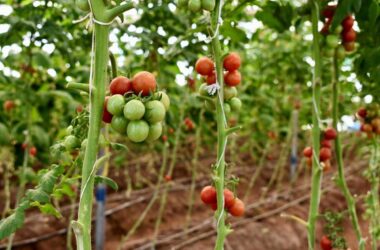The Roseau Valley, along with the Cul de Sac and Mabouya Valleys, has been at the fulcrum of economic, social and cultural development in Saint Lucia from colonial times and well into the pre- and immediate post-independence period. Sometimes this is missed by those who have tended to see development primarily through the lens of what has unfolded in the urban areas — the towns and ports, commerce and trade centred on these areas, and often labour relations as they developed relative to these. This volume, however, helps refocus on the seminal role played by the agricultural valleys and their people, and in particular Roseau Valley.
Stories of Roseau Valley explores this with particularity, and from a vantage point that only those intimately connected with the area can —those who have grown up and are immersed in the community, its history, its anecdotes and its folklore, as well as those connected in a professional capacity. The Committee set up, originally in 2016, by the Jacmel Jouné Kwéyòl Committee and the resource persons they have brought on board, must be especially commended for this volume.
The eight years that have elapsed since the constitution of the Committee, have not meant that the members and contributors to this work have been twiddling their thumbs. All that has intervened during this time, including the almost 3-year impact of the Covid-19 pandemic have, in my view, resulted in an immensely well-researched and well put-together work. It is a publication of which Jan Wozo and Saint Lucia can be justly proud.
This easy-to-read, 185-page book does not claim to be a scholarly treatise. Rather, it is an account based on verifiable factual and authoritative references and a powerful wellspring of anecdotal witness by elders in the communities which comprise the Roseau Valley. The historical and sociological perspectives presented are offered with a clarity and poignancy that makes this a go-to reading for any student of Saint Lucia’s sociological development. In this regard, the contributions of Primus Hutchinson, Francis Leonce, Bryan Auguste, Fr. Lambert St. Rose, Patrish Lionel among others are seminal.
Of particular note is the story of the peopling of the communities by populations of African, East Indian and to some extent, European origin as well. These are sociological threads that are often missed in the bustle of everyday life, and of narratives that tend to be narrow and selective. The role of intra-island migration in the settlement and general development of the Roseau Valley is also of no small interest. Other centres of colonial production like the Mabouya and Cul de Sac Valleys mirror this to a large extent, and this documentation provides us with a guide and an outline of what took place during the days of sugar cane cultivation and the attendant production of sugar as well as rum. The phasing out of sugar production and its replacement with bananas which set the stage for accelerated GDP growth, though not necessarily for structural economic change, is to be noted.
The movement of skilled and unskilled labour from other communities in Saint Lucia, such as Choiseul, Soufriere and Vieux Fort, towards these centres of production was significant. The author of this review can attest to this from his research as a young Saint Lucia Teachers’ College student in the 70’s when doing some work in the Richefond- La Ressource- Mabouya Valley area. Hutchinson traces these movements in his “historical perspectives.”
With a foreword by eminent agricultural scientist Sir Calixte George, this account notes the Roseau Valley’s (WINBAN Research Centre’s) internationally recognised work in banana research and development. It also sheds considerable light on patterns of land tenure and how this impacted economic production as well as the critical subsistence economy that subsumed social life, particularly in the post-emancipation and pre-independence periods. The Model Farms experiment and considerations of land reform that are dealt with in Chapter 7 and its wider contextualisation in Francis Leonce’s account is revealing. There may be some pointers here, at a time when we are increasingly concerned with food security.
Hutchinson’s historical tracings and the sociological observations that thread through the first six chapters of the book bring a broadcast journalist’s perspective to bear in an impactful way. Francis Leonce’s ‘the Story of Bananas in the Valley’ is an account which brings into play the keen observation of a scientist, as well as the sensitivities of the reflections of one invested in the development of his people. Observations on the development of education and the cultural threads of the community by Bryan Auguste, Stanislaus Albert and Fr. Lambert St. Rose are not to be overlooked. The tiny capsules and vignettes of community life contained in some of the interviews and legends help to contextualise the wider import of these, not only for community life, but for the larger Saint Lucia story.
The title of the book under review, “Stories of Roseau Valley”, is indeed modest. Its 185 pages engage the reader with historical notes intertwined with anecdotal evidence, personal experiences and folk myths that are invaluable in evaluating the development of the Valley’s communities and the trajectory of its development in the future.
Published by Jako Books and under the imprint of Roseau Valley Press, this publication is a worthy addition to the growing collection of Saint Lucian literature that is immensely important to the telling of our story. This is another in the growing body of work that continues to define us not in terms of how others see us, but how we see ourselves. And in this vein, it should be of no insignificant note that it is being launched during Emancipation Month 2024.
These are truly human and humanising stories that the reader will find of deep interest. Congratulations Primus Hutchinson et al! Nou ka swété zòt-tout, gwann félisitasyon!





![Demonstrations of rejection held in various cities around the world [Photo credit : Venezuelan Embassy]](https://thevoiceslu.com/wp-content/uploads/2026/01/Demonstrations-of-rejection-380x250.jpg)

![Hyacinth Daniel [Photo Credit: Kingsley Emanuel]](https://thevoiceslu.com/wp-content/uploads/2026/01/Hyacinth-Daniel-feat-380x250.jpg)






